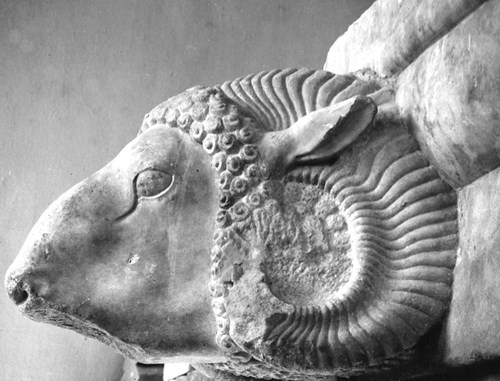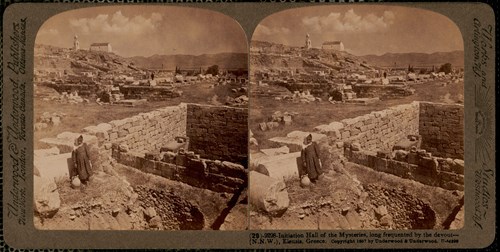Altar-priest
The altar-priest performed duties related to the preparation of the initiation but not to the initiation itself. The office rarely appears in ancient inscriptions, and its responsibilities are unclear. It seems possible that the altar-priest was responsible for sacrificing animals or, in general, for sacrifices to the gods. He came from the genos of the Kerykes. He was aeisitos for life and had the right to erect a statue in the sanctuary in Eleusis.

Archaic ram's head, imitation of a gutter-spout, from corner of the sima of the Peisistratan Telesterion, sculpture, American School of Classical Studies / Alison Frantz Photographic Collection © American School of Classical Studies at Athens, Archives, Alison Frantz Photographic Collection
In Roman times the office gained more prestige. It…





